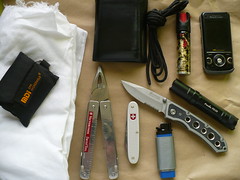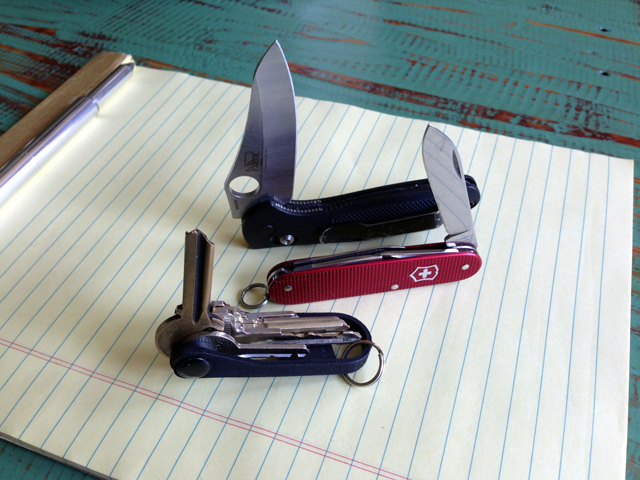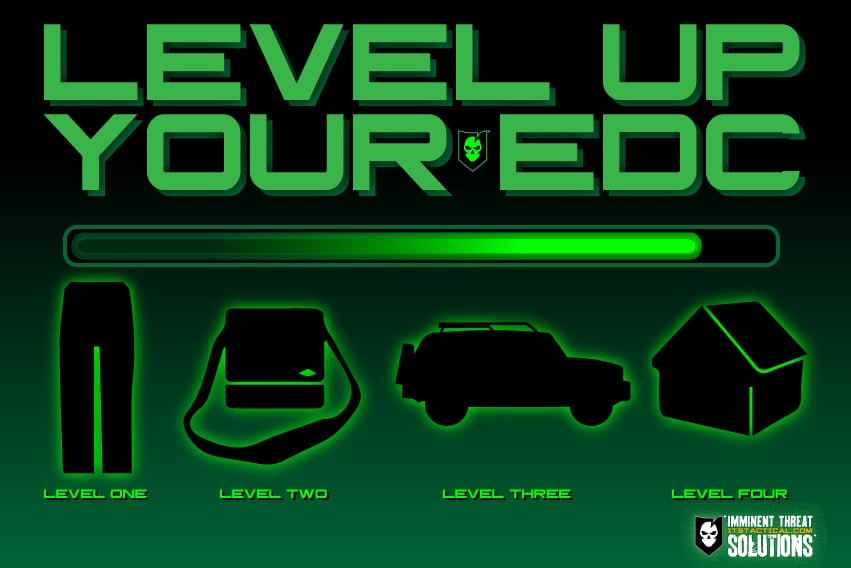Developing Your Every Day Carry Kit
Developing Your Every Day Carry Kit
 What should you carry in your EDC kit? I can’t give you the definitive answer, but I’ll try to help you start thinking about what you’ll need.
What should you carry in your EDC kit? I can’t give you the definitive answer, but I’ll try to help you start thinking about what you’ll need.
Before we start, it is important to know that an EDC kit is not a Survival Kit or a Bug Out Bag. It should consist of just the basic items you’ll need to help you quickly respond to situations that could arise during your day.
An EDC kit should be as light and small as possible. You use your pistol to get to your rifle, and an EDC kit should serve the same purpose. It should serve your needs until you get home, get to your car or get some help.
Assessing Your Environment
First of all, assess your environment. Do you live in a tornado area? Or perhaps in an earthquake prone zone? Do you have to drive long distances to get to work or will you stay a few blocks away from home?
All these questions (and any others you can ask yourself) will help you to determine your needs. What I’m trying to say is, why carry a fully stocked first aid kit if you will spend your day only a few minutes away from a hospital?
In my case (and I write this down just as an example) I do live in an area that has been hit by earthquakes and that could potentially be hit by a tsunami. We have occasional storms and landslides, as well as a growing danger of violent riots, especially on certain days of the year.
Also, I work 40 minutes away from home, so there is the possibility of a car breakdown or witnessing a car crash on the highway. These are my potential needs, what are yours?
Selecting Your Tools
Once you’re clear about your needs, it’s time to plan how you will handle them. What tools will you need in case these situations arise?
Don’t limit yourself to emergency situations, are there any tasks you do normally that would benefit from having a certain item with you?
Be smart and think about how you will use your tools, don’t just rush to buy things because someone else has them in their kit you saw on YouTube.
Perhaps there are some tools that can perform more than one task. Remember, you have limited space available, and any weight you can avoid is bad weight.
Carrying Your Gear
So now you have your needs, and the potential tools you could use. Step three is thinking about how you’re going to carry those tools.
Will you use your pockets? A carabineer? A fanny pack? Perhaps you can carry a small backpack. How about your car’s glove compartment?
Only after you’ve determined your needs and your resources (space available and capability of weight carrying), can you start building your EDC kit.
Remove everything that has no real purpose or anything you really don’t see yourself using.
When packing your gear, place it in a logical manner with things you will use more often being more accessible.
Summary
Don’t start building your kit based on the tools, start with your needs. Once you know your needs, you will know what tools to take with you and what tools should stay at home.
Practice with your gear, find new uses for it. The more you know, and the more practice you have, the less tools you will have to carry. A good exercise is asking to yourself “If I could only carry 3 items, what would they be?”
Remember to keep revisiting your kit. If you’re doing something unusual, or going to a different place, perhaps your normal tools need to be reconsidered.
So, do you already have an EDC kit? What are your needs and how do you address them? Post your experiences!
TJK is an Engineer living in Chile, a Boy Scout for almost 10 years and a Volunteer Firefighter for seven years. We’d like to thank him for taking the time to write a guest post for ITS Tactical!
Check out the ITS Tactical EDC Flickr Group and post your photo!










Discussion